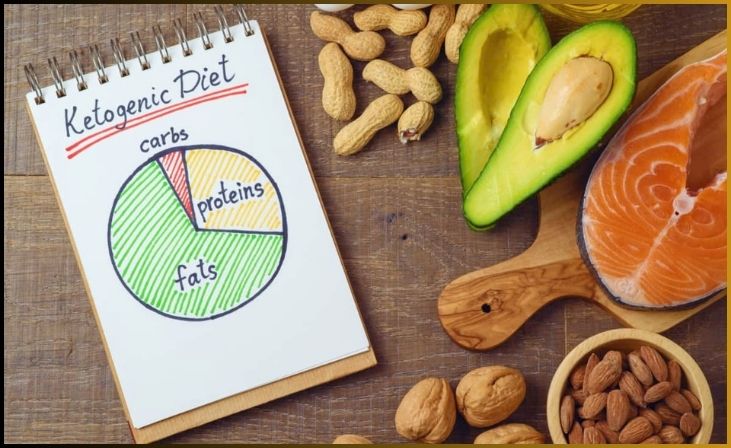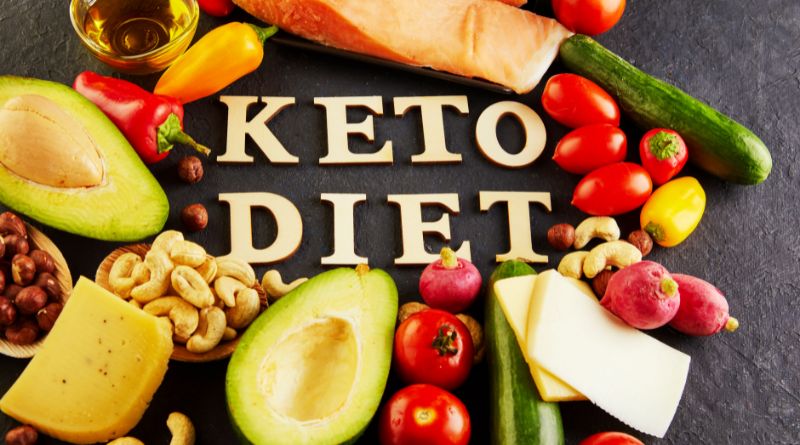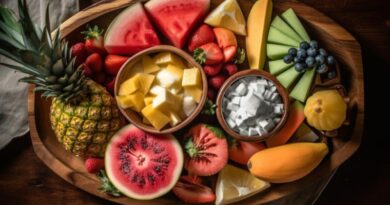The ketogenic diet, or keto diet, is more than just a passing trend. It’s a powerful and scientifically backed approach to weight loss and overall health that has helped countless individuals transform their lives. The core principle of the keto diet is simple: by drastically reducing carbohydrate intake and replacing them with healthy fats, you can shift your body into a state of ketosis, where it becomes a fat-burning machine. However, like any dietary plan, success on the keto diet depends on doing it right.
In this blog, we’ll explore the top 10 best keto diet tips that will help you navigate the keto journey effectively. From understanding the basics of the keto diet to selecting the right fats, proteins, and vegetables, to practical advice on meal planning and staying hydrated, these tips will equip you with the knowledge and strategies to make the keto diet work for you. Whether you’re a keto newbie or a seasoned pro, these tips will serve as valuable guidance on your path to health and wellness through the ketogenic lifestyle.
Best Keto Diet Tips
Discover the top 10 best keto diet tips to help you succeed on your low-carb, high-fat journey. From understanding macros to managing the keto flu, these tips will guide you toward achieving your health and weight loss goals while enjoying delicious keto-friendly foods.
Understand the Keto Diet

Understanding the keto diet is essential for a successful low-carb, high-fat journey. The ketogenic diet, or keto for short, is a dietary approach that emphasizes consuming minimal carbohydrates and higher amounts of healthy fats, forcing the body to enter a state of ketosis. During ketosis, the body burns fat for fuel instead of carbohydrates, resulting in weight loss and various health benefits.
To follow this diet effectively, it’s crucial to comprehend the principles behind it, such as the macronutrient distribution – typically 70-75% fat, 20-25% protein, and 5-10% carbohydrates. This understanding allows you to make informed food choices, plan balanced meals, and maintain ketosis for optimal results.
For More- 7 Healthy Mediterranean Diet Meal Plan Ideas
Choose the Right Fats
Selecting the right fats is a fundamental aspect of the keto diet. Opt for healthy fats, such as avocados, olive oil, nuts, and fatty fish like salmon, which provide essential nutrients and promote heart health. These fats are rich in monounsaturated and polyunsaturated fats, which can aid in reducing inflammation and improving cholesterol levels.
Avoid trans fats and heavily processed fats, as they can have adverse health effects. Prioritizing the right fats helps you maintain the desired macronutrient balance for ketosis and supports your overall well-being on the keto diet.
Prioritize Quality Proteins
Emphasizing quality proteins is a key element of the keto diet. Opt for lean sources of protein like poultry, fish, lean beef, and tofu. These proteins offer essential amino acids without excessive saturated fats. Quality protein intake helps in muscle maintenance and supports satiety, reducing cravings.
It’s important to strike a balance between protein and fat intake to remain in ketosis, as excessive protein can hinder this state. Choose organic or grass-fed options whenever possible to reduce exposure to harmful additives and promote overall health while enjoying the benefits of ketosis.
Embrace Non-Starchy Vegetables
Incorporating non-starchy vegetables into your keto diet is essential for obtaining essential nutrients and fiber without the excessive carbs. Non-starchy vegetables like leafy greens, broccoli, cauliflower, and zucchini are low in carbohydrates but rich in vitamins, minerals, and antioxidants. They add volume and flavor to your meals while helping maintain ketosis.
These veggies can be enjoyed in salads, stir-fries, or roasted dishes, making your keto diet both nutritious and delicious. Remember to keep track of your carb intake and aim for a good balance of non-starchy vegetables to maintain the desired ketogenic state.
Monitor Carb Intake
One of the fundamental aspects of a successful keto diet is monitoring your carbohydrate intake. To maintain a state of ketosis, it’s crucial to limit your daily carb consumption. Typically, keto diets recommend keeping your daily carb intake to around 20-50 grams, although individual tolerance may vary. This ensures that your body primarily uses fat for energy instead of carbohydrates. Be diligent in reading food labels and tracking your carb intake to stay within your target range.
Focus on high-fiber, low-carb foods like vegetables and nuts, and avoid or limit high-carb items like grains, sugary foods, and starchy vegetables. Monitoring your carb intake helps you achieve and sustain the metabolic state necessary for the keto diet’s effectiveness.
Stay Hydrated and Replenish Electrolytes

Staying hydrated and replenishing electrolytes is essential while following a keto diet. When you reduce your carbohydrate intake, your body retains less water, and this can lead to dehydration and electrolyte imbalances. To counteract this, aim to drink plenty of water throughout the day. Additionally, consider incorporating foods rich in electrolytes like sodium, potassium, and magnesium into your diet. Avocado, leafy greens, and nuts are good sources of magnesium and potassium. You can also add a pinch of salt to your meals to increase your sodium intake.
In some cases, keto-friendly electrolyte supplements can be beneficial. Staying hydrated and maintaining proper electrolyte balance helps prevent the common side effects of the keto flu, such as fatigue, muscle cramps, and dizziness, and ensures you feel your best on the keto diet.
Plan Your Meals
Meal planning is a crucial component of a successful keto diet. Planning your meals in advance allows you to stay on track, make better food choices, and ensure you’re meeting your macronutrient targets. Start by creating a weekly or monthly meal plan that includes a variety of keto-friendly foods. This will help you avoid the temptation of high-carb options when you’re hungry or in a rush.
When planning your keto meals, consider your daily carb, fat, and protein targets, and try to distribute them evenly throughout the day. Include a balance of quality proteins, healthy fats, and low-carb vegetables. Preparing your meals at home gives you more control over your ingredients and portion sizes, making it easier to stay within your macros.
Having a meal plan also simplifies your grocery shopping, reduces food waste, and saves time during the week. It’s a proactive strategy that can help you stay committed to your keto goals and make the diet more manageable and enjoyable.
Listen to Your Body
Listening to your body is a fundamental aspect of following the keto diet successfully. Paying attention to hunger and fullness cues can help you maintain a healthy relationship with food and make better dietary choices. When on keto, it’s essential to understand the difference between true hunger and emotional or habit-driven eating.
Incorporate mindful eating practices by being present during meals, savoring each bite, and eating slowly. This allows you to recognize when you’re satisfied and should stop eating. Keep in mind that on a keto diet, you might feel more satisfied with fewer calories due to the high-fat content of your meals.
Also, monitor how your body responds to different foods. Some individuals may have varying tolerances to certain keto-friendly foods like dairy or artificial sweeteners. By listening to your body’s reactions, you can fine-tune your keto diet to suit your specific needs and preferences, ensuring a more successful and sustainable journey.
Watch for Hidden Carbs
Watching for hidden carbs is essential when following a keto diet. While it’s relatively straightforward to identify and count the carbs from common sources like bread, pasta, and sugary snacks, hidden carbohydrates can easily sabotage your efforts. These concealed carbs often hide in processed foods, condiments, and seemingly healthy choices. To avoid unintentionally exceeding your daily carb limit, it’s crucial to be diligent.
Read food labels carefully, keeping an eye out for ingredients like maltodextrin, dextrose, and any word ending in “ose,” which often indicates sugar. Always consider serving sizes, as they can sometimes be deceptively small. Be cautious with sauces, dressings, and condiments, as they can contain hidden sugars and starches.
Seek Professional Guidance

Seeking professional guidance is a crucial aspect of successfully navigating the complexities of the keto diet. While many people can adopt a keto lifestyle on their own, others may face unique challenges, health concerns, or dietary restrictions that require expert advice. Consulting with a registered dietitian, nutritionist, or healthcare provider who specializes in the ketogenic diet can provide you with tailored recommendations, helping you make informed choices about your food intake.
They can customize your meal plans, address any nutritional deficiencies, and guide you through the diet’s potential side effects, such as the “keto flu.” These professionals can also ensure your dietary adjustments align with your specific health goals, whether you aim to lose weight, manage diabetes, or improve your overall well-being.
Also Read- 10 Best Vegan Protein Sources for a Plant-Powered Diet
Conclusion
The keto diet offers a unique and effective approach to weight loss and improved health, but it’s essential to follow the best practices to reap its benefits. By understanding the diet’s principles, making informed food choices, and embracing healthy fats, quality proteins, and non-starchy vegetables, you can create a sustainable keto meal plan. Monitoring your carb intake, staying hydrated, and listening to your body’s cues will help you achieve success on this dietary journey. Remember to watch for hidden carbs and consider seeking professional guidance when needed. With these top 10 keto diet tips, you’ll be well on your way to a healthier, more vibrant you.
FAQs
The keto diet is a low-carb, high-fat diet designed to induce a state of ketosis in the body. It involves drastically reducing carbohydrate intake and replacing it with fats.
Yes, dairy products like cheese, yogurt, and butter are keto-friendly as long as they are low in carbs and don’t contain added sugars.
Keto-friendly sweeteners include stevia, erythritol, monk fruit, and xylitol, which have little to no impact on blood sugar.







